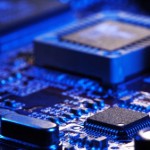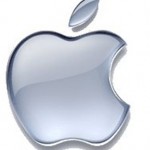 Microsoft officially ended the Small Business Server (aka SBS) to the chagrin of many smaller companies wanting in-house control of their data at a reasonable cost. With this move the cost of having an in-house solution for email & data went up by $3000 or more. I’ll explain the changes and how you can make a new SBS that will at least do the same job as before.
Microsoft officially ended the Small Business Server (aka SBS) to the chagrin of many smaller companies wanting in-house control of their data at a reasonable cost. With this move the cost of having an in-house solution for email & data went up by $3000 or more. I’ll explain the changes and how you can make a new SBS that will at least do the same job as before.
SBS was unique in it allowed the Domain Control & Exchange to co-exist on the same server, normally this didn’t work.. Exchange doesn’t like being on a DC. The new method means every company needs 2 servers in their office or move email to the Cloud, as we know in Canada that’s not going to work (unless you have no email from the government or government contracts which REQUIRE your mail & server be in the country).
The new solution is a computer powerful enough to run 2 servers, one normally and the 2nd virtually. Windows Server Essentials 2012 will be the base machine and another copy of Server 2012 Standard runs as a VM (but not a DC) and there resides the Exchange server. Many other changes are also needed and the setup is much longer and of course the server more complicated. Instead of the $900 + licenses (past 5) on SBS you now have $500 for Essentials (upto 25 users), $1000 for Standard but also $900 Exchange & $110/user.
Of course setting up 2 servers takes longer (even if one is virtual), the hardware is more expensive and you need a few extra parts (like a VM drive for Exchange). All in all an in-house system went from about $6000 (hardware, software & labour) to about $10,000. You can no longer buy SBS 2011 but for those with a copy you could keep it running on new hardware for a least a few more years (after all SBS 2003 just ended it life).

 Gizmodo (a tech savy company that offers layman explanations about the latest gizmos) while underwhelmed by the new iPad2 thought they have some fun with the non-tech. This fun was giving a regular iPad2 user a ‘new iPad’, which was actually an old iPad2 but they were TOLD it was the new version. The sad part is the apple consumer wanted the ‘new iPad’ because it was the new version, even though it was the same as the one they already owned.
Gizmodo (a tech savy company that offers layman explanations about the latest gizmos) while underwhelmed by the new iPad2 thought they have some fun with the non-tech. This fun was giving a regular iPad2 user a ‘new iPad’, which was actually an old iPad2 but they were TOLD it was the new version. The sad part is the apple consumer wanted the ‘new iPad’ because it was the new version, even though it was the same as the one they already owned.